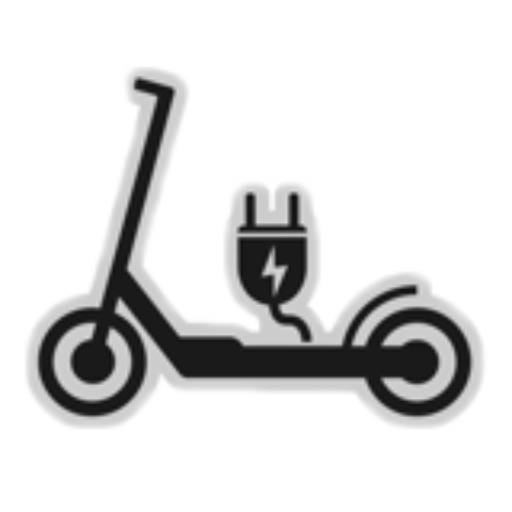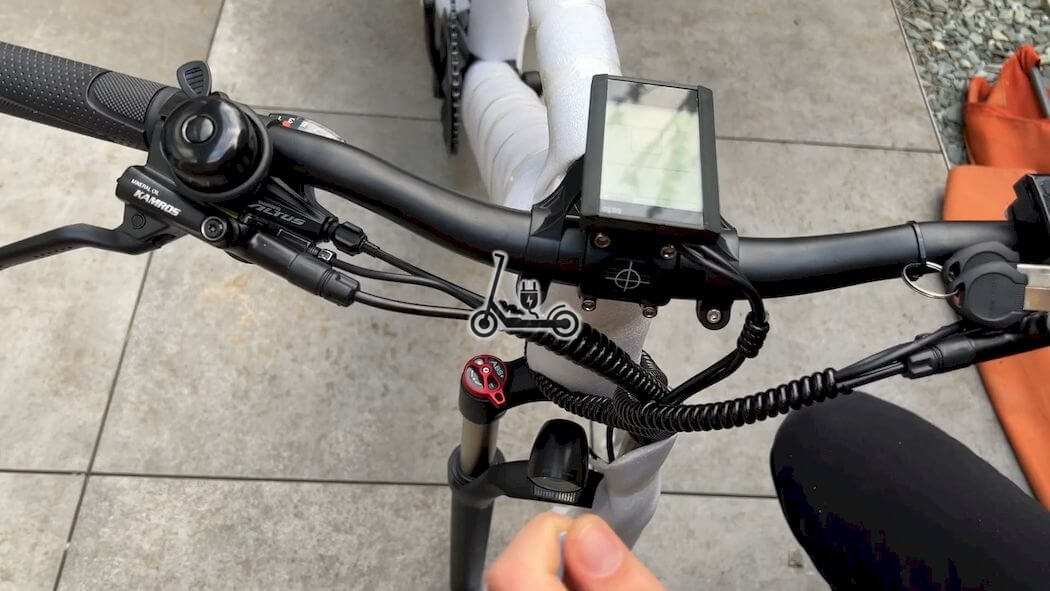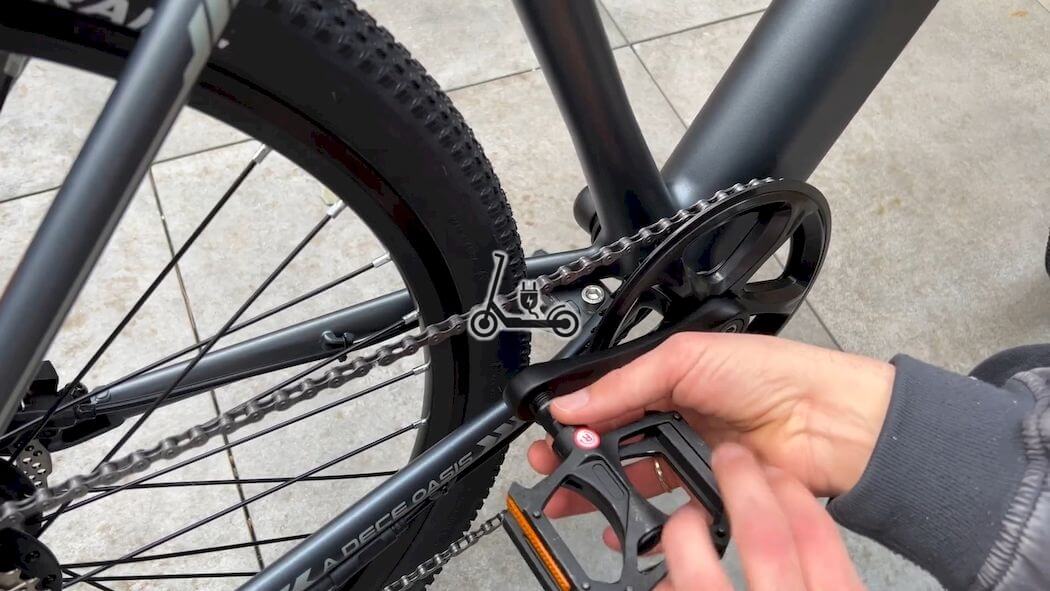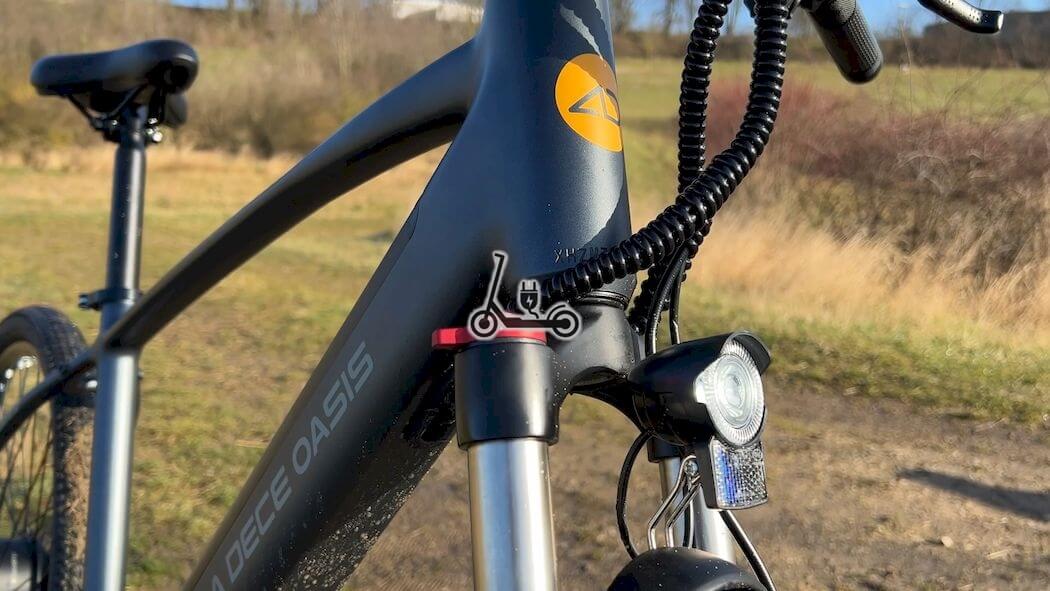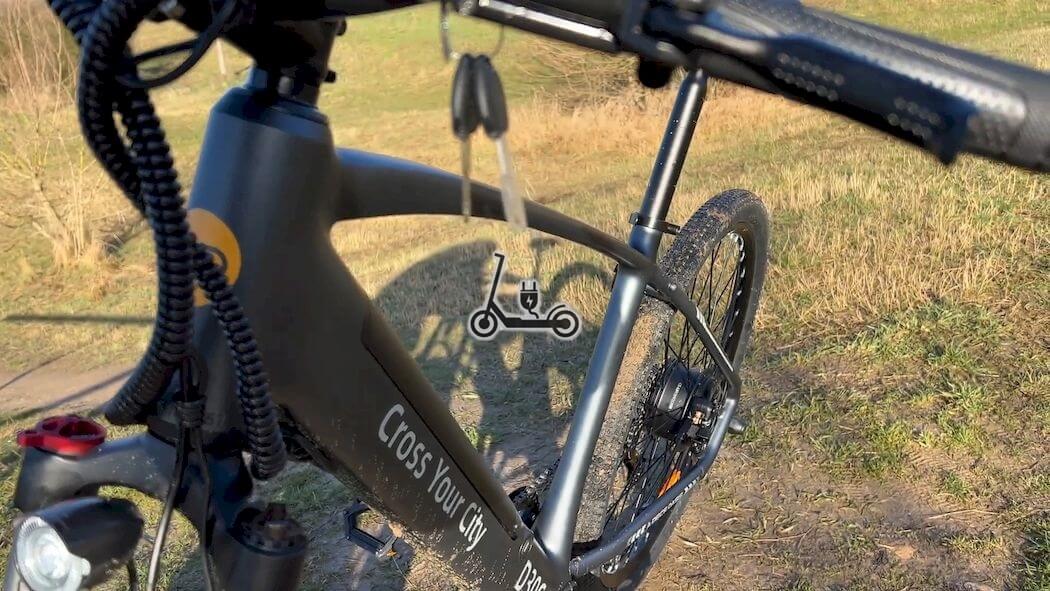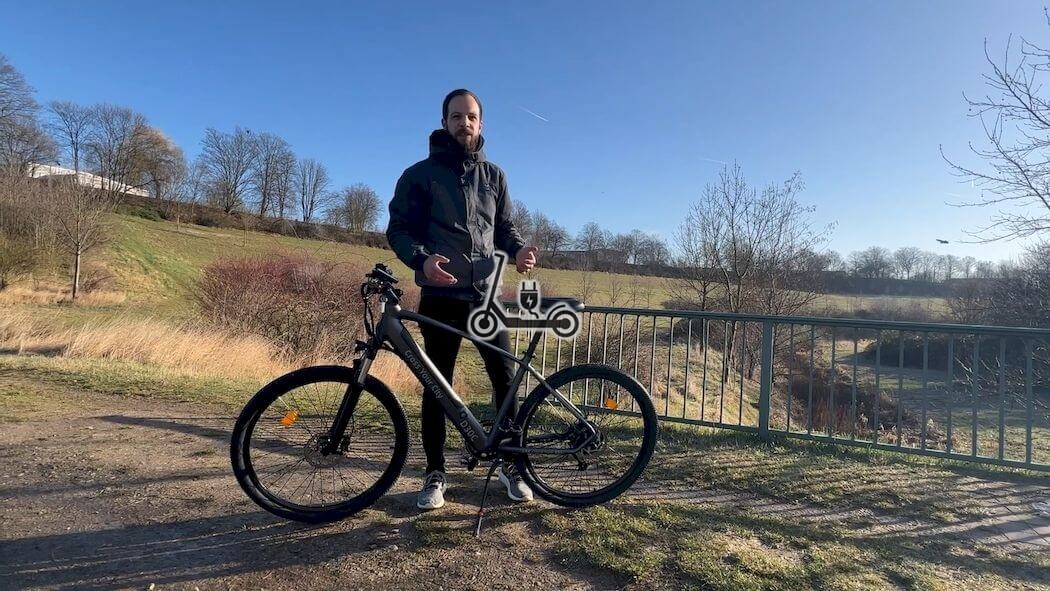The D30C bike from A Dece Oasis (ADO) wants to offer a VTC experience with electric assistance capable of supporting long hikes. Light thanks to its aluminum frame, equipped with certain refinements such as front suspension and hydraulic disc brakes, it constitutes a proposal between pleasure of the ride and sporting sensations for less than $2000.
Let’s go for the adventure!
Electric bikes are currently flourishing with the fashion for urban mobility, but also with technical developments making it possible to offer better quality electric motors and batteries with greater autonomy and better resistance over time.
There are now models on the market for all tastes, from pure urban mobility (the relatively short journey to the office) with compact and folding bikes to the comfortable and versatile city bike, including demanding hybrid and mountain bikes.
The D30C model from A Dece Oasis (ADO) falls into this category of VTC which will allow you to face almost all types of roads and tracks by offering a good compromise in different areas, from driving comfort to the comfortable autonomy.
| Item | ADO D30C |
| Features | Compliance with EU regulations |
| Support mode | pedal /Pedal assist |
| Brand | A Dece Oasis |
| Type | 27.5 x 1.95 Inches |
| Model | D30C |
| Rated Power | 250W |
| Torque | 42N.m |
| Disc Brake | Front hydraulic disc brakes |
| Shock Absorption | Manual adjustment |
| Overall unit | 1800 x 640 x 1100mm |
| Colour | grey / silver |
| Max. Speed | 25km |
| Transmission | Shimano 9 speed |
| Control System | G-drive 2.0 |
| Assisting Range | <90km |
| Charging Time | 6-7 hours |
| Rated Voltage | 36V |
| Charge cut-off Voltage | 42V |
| Rated Capacity | 36V 10.4AH |
| Type of batteries | Removable portable lithium battery |
Ado D30C: Unboxing
The large box that brought it to us contained a surprise: the bike, partly disassembled, was enclosed in a gangue of expanded foam which certainly protects it very effectively against shocks but which is also quite painful to skin, not to mention the shreds of foam fluttering happily.
Unless you are a barbarian tearing everything off with your bare hands, it will take a good fifteen minutes to extract the bike and its elements from its protection, but let’s not complain at least it was extremely well protected! The assembly is then not very complicated, the essentials being already in place and only asking to be firmly fixed or screwed.
The manual was generic and did not correspond exactly to our model, but the essentials were explained. The trickiest point is installing the front wheel, taking care to slide the brake disc well into the shoes, without anything touching or rubbing.
We strongly recommend tightening everything that can be tightened, from the handlebars to the saddle and the crankset, to avoid unpleasant surprises afterwards and play in the elements.
The battery charger, of course, but also the spanners and tightening tools for mounting the bike and servicing it. We will also find a bicycle pump and a support for the mobile phone which are offered. On the other hand, the manufacturer makes the economy of the mudguards.
Once everything is assembled, tightened and loaded, it’s time to take the tour of the machine!
Ado D30C: Design and Appearance
The ADO D30C electric bike is a versatile model that aims to be able to take you everywhere with a certain riding comfort. It sports a good-sized aluminum alloy frame that does not bend, which will require having enough space for storage.
The handlebars have a fixed height and it is at the level of the saddle that you can adjust the seat height to obtain the best riding position. The battery is housed in the lower tube of the frame and can only be removed from its location using a key provided.
It can be charged using the connector hidden under a waterproof support that is accessible whether the battery is attached to the bike or not. You can therefore charge it directly or remove it and charge it at home.
The electric motor is installed in the hub of the rear wheel, with the Shimano 9-speed transmission. The weight is thus relatively well balanced on the rear two thirds of the bike.
The wheels are of the 27.5 x 1.9 inch type and are therefore suitable for a versatile road and path profile and it will remain more risky to venture on very tortured tracks. There are front and rear disc brakes with hydraulic braking for greater efficiency.
Note that the bike does not include a rear light. Only a red reflector is present under the saddle, in addition to those, yellow, on the wheels.
At the front, the fork will provide cushioning which can be deactivated via a latch depending on the terrain and riding habits. There is a front light that can be activated from the handlebar control panel (a long press on the upper button).
For piloting, a central screen provides a set of useful information. The display is easy to read in bright light and will include speed, distance traveled (that of the current trip and total mileage), time, power assist level (from 0 to 3) and remaining battery capacity. battery.
This last measurement is estimated in real time: climb a difficult hill with the highest level of assistance and you will see the percentage melt, land on the flat and the value will immediately go up.
The electric assistance is activated with the buttons on the left of the handlebar, the central button being used to modify the information displayed or to turn on / off the screen. Level 0 cancels the assistance and you end up with an unassisted bike.
On the right is the management of the derailleur gears, from 1 to 9, with the traditional triggers to change gear ratio. A small bell will complete the equipment.
Overall, the bike looks well finished and inspires confidence. The seat is quite comfortable with a relatively soft saddle and adjustable front suspension. The position is of the 60 degree type with the back slightly inclined and the weight moderately carried on the forearms and wrists.
And since it offers electric assistance, let’s talk about it!
Ado D30C: Electric assistance
First of all, the ADO D30C model is a VAE (electrically assisted bicycle) without autonomous function. It will therefore be necessary to pedal to move it forward and there is no mode to make it roll on its own like an electric scooter.
The electric motor, calibrated for the European standard (250W, 25 km/h max) is also controlled by a controller which activates it and regulates its power according to several parameters, such as speed, pedaling effort and the level of assistance required.
In the case of the D30C, you have to pedal a little and pick up speed slightly before the electric assistance kicks in and gives a real boost that allows you to effortlessly reach around 10 km/h.
If the movement is accompanied by pedaling to maintain speed, the electric motor remains activated until the speed limit is reached (assistance 1: 15 km/h, assistance 2: 20 km/h, assistance 3: 25 km /h). If not, support stops.
Likewise, the assistance will cut out if the speed limit is exceeded and will resume when the bike slows down if pedaling is maintained. This way of working aims to spare the electric motor and the battery, and to provide good autonomy in VAE.
Unlike other VAEs with linear electric assistance, here we have a very clear starting impulse then pedaling assistance depending on the level of assistance chosen. This may surprise a little at first (you feel the bike “go away” on its own for a few seconds), but it turns out to be very pleasant to use.
For hill starts, there is even a start aid: a long press on the lower button of the control will trigger the short impulse when starting with the bike stationary to help take the initial speed. No need to force the pedals to get started, the ADO VAE can take care of it!
In all cases, the assistance is interrupted beyond 25 km/h, the maximum speed authorized for electric assistance according to European standards. It’s up to you to go faster, but it will then be with the sole strength of your calves!
Then, the piloting is that of a classic bicycle, with the management of the derailleur speeds thanks to the two triggers. The presence of 9 speeds is a classic for tackling the majority of terrains.
On our test model, the shifting is smooth except for a few creaks between 4th and 6th which will probably require a few small additional adjustments.
Note that the assistance can be completely deactivated (assistance 0), transforming the VAE into a pure and simple bicycle… the weight of the motor and the battery in addition!
Ado D30C: Driving
It only takes one or two sessions to fully understand the control of the D30C bike, between the different levels of assistance, the impulses and the speeds of the derailleur. But what about autonomy?
The manufacturer announces a good autonomy of 90 km for its VAE but this will of course depend on many factors: the weight of the user, the terrain, the slopes, the ambient temperature…
As part of our test, the surrounding environment is essentially made up of cycle paths with relatively gentle hills and a few steeper slopes. With this mix, and mainly on paved roads, assistance 1 was predominant, with the transition to intermediate assistance on the climbs, which made it possible to climb at a speed close to 20 km/h without great effort, and occasional assistance 3.
70 km further, with discontinuous use of electric assistance and a rider who still weighs 90 kg, the VAE still announced 30% autonomy in these conditions of mixed use.
However, it should not be hoped to go much further unless you stay in areas where electric assistance is weakly required. In addition to the battery indicator which appears in red and calls for a recharge, the battery power runs out very quickly on the slightest steep slope, to the point of interrupting punctually and creating jerks .
The percentage of the battery then collapses to less than 10% after a few minutes of pedaling and you end up finishing the slope like on a classic bike.
With its nine speeds, the bike makes it possible to manage a comfortable pace even without assistance, which is not necessarily the case with a bike with a 7-speed derailleur where it may be in your interest to maintain the electric assistance under hard to reel at the speed limit.
In other words, unless you constantly face slopes that would require you to maintain the pedaling aid permanently, the D30C bike will allow you to take quite a few walks before having to be recharged or to consider making long trips without fear of power failure.
Be careful all the same, in assistance 2, the autonomy calculated in real time tended to be halved compared to that displayed at the first level of assistance and as for any electric vehicle, it will be necessary to know how to anticipate the energy reserve according to the effort provided and various parameters. Still, the autonomy of the VAE seems very comfortable here.
In fact, riding becomes very pleasant and extends the possible range compared to a conventional bike. The slopes, even steep ones, are easily crossed and, if you still have to pedal a minimum, the effort is greatly reduced (unless you absolutely want to go as fast as possible), even if it remains possible at any time. to complicate things for the most athletic.
Ado D30C: Conclusion
The D30C electric bike from A Dece Oasis (ADO) is the little brother of the D30 model, but like it offers a nice experience as an e-bike.
With its non-folding frame, its generous dimensions and its VTC profile, it is not exactly made for pure urban mobility use and is rather aimed at walking or even long-distance hiking.
If it will be able to show its limits on all terrain, which would require more equipment and suitable tires, the D30C is as comfortable on the road/cycle track as on paths that are not too chaotic with its front suspension and its comfortable saddle while offering safety thanks to its hydraulic disc brakes that will allow short emergency braking.
This is a real bike for which you will have to pedal to move forward and it is even possible to completely cut off the electric assistance. The on-board computer offers good readability, even in broad daylight, and includes a number of useful information, in addition to the remaining autonomy.
The 90 km of autonomy announced in electric assistance will depend on many different factors, but with a sturdy 90 kg on the back and a choice of routes not imposing a permanent and too violent recourse to electric assistance, we can reach the hundred kilometers actually traveled before worrying about having to recharge (climbing Mont Ventoux will be another matter!).
We hardly regret the absence of a rear light (there is only a simple reflector under the saddle) and mudguards (that can always be used), but we appreciate the attention of the bicycle pump and of the smartphone support that are offered. Too bad the on-board computer does not offer USB connectivity to power it at least occasionally and does not allow the export of recorded data for long-term monitoring.
These are just a few points of detail for an overall very pleasant experience and the promise of rides to areas that would require significant effort on a classic bike, even if nothing prevents you from cutting off the electric assistance and going there.
You will be able to buy the ADO D30C / D300C e-bike currently at the discounted price of $1819. It is available in two colors gray and silver. Shipping is free from Europe in 7-10 days.
